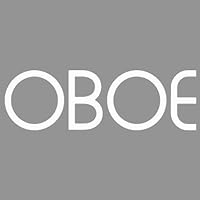In the field of animation, styles, and techniques are crucial components. There are many different kinds of animation techniques, such as stop motion, computer, and conventional animation. Every approach has its own distinct look and feel. Anyone interested in the field of animation should understand these methods and styles. We will examine the many animation styles and techniques in this comprehensive tutorial to give you a thorough understanding of this fascinating field.
Key Takeaways:
- Animation techniques and styles are crucial in the world of animation.
- Traditional animation techniques involve drawing each frame by hand, while computer animation techniques utilize software to create realistic animations.
- Stop-motion animation is a unique technique that involves manipulating physical objects or characters frame by frame.
- Mastering different animation techniques<span style=”font-weight: 400;”> and exploring various styles allows animators to unleash their creativity and bring their vision to life.
- Understanding animation techniques and styles is essential for appreciating and creating captivating animations.
Animation Techniques:
Traditional Animation Techniques
For a long time, the foundation of the animation industry has been traditional animation techniques. Using this method, every frame is manually drawn, resulting in a series of pictures that, when seen quickly one after the other, appear to be moving. Characters and backgrounds are generated in two dimensions in 2D animation, which is a popular type of traditional animation.
Animators may express their creativity and produce eye-catching animations with 2D animation. Animators may bring characters to life with smooth movements and unique personalities by having exact control over every frame. Traditional animation has a nostalgic and endearing appeal because it is hand-drawn.
Animators employ a variety of equipment, including pencils, paper, light boxes, and animation desks, to create traditional animations. This technique requires skill, patience, and close attention to detail to be used properly. To guarantee a fluid and flawless animation, each frame needs to be carefully thought out and executed.
Examples of Traditional Animation Techniques
Well-known films that employ traditional animation techniques are Snow White and the Seven Dwarfs and The Lion King, two classic Disney productions. These films captivate audiences with their timeless stories and gorgeous animations, showcasing the skill and artistry of traditional animation.
The films from Studio Ghibli, such as “Spirited Away” and “My Neighbour Totoro,” are another noteworthy example. These films are prime examples of the distinct aesthetic and meticulous attention to detail that can be produced using conventional animation methods. Millions of people have been enthralled with the vivid and enchanted worlds created by the hand-drawn characters and exquisitely designed surroundings.
| Traditional Animation Techniques | Examples |
| 2D Animation | “Snow White and the Seven Dwarfs” |
| “The Lion King” | |
| “Spirited Away” | |
| “My Neighbor Totoro” |
In summary, the evolution of animation has been greatly influenced by traditional animation methods, especially 2D animation. Due to the hand-drawn nature of this approach, individual artistic expression and meticulous attention to detail are possible. Traditional animation, from Studio Ghibli masterpieces to vintage Disney flicks, never fails to enthrall viewers with its ageless beauty.
Computer Animation Techniques
The field of animation has transformed thanks to computer animation tools, which enable animators to produce realistic and aesthetically appealing animations. Three-dimensional animation, in which environments and characters are rendered in three dimensions using specialized software, is one of the most widely used types of computer animation.
Animators in 3D animation possess the capability to manage and oversee all facets of the animation, ranging from character movements to environment lighting and texture. A sense of depth and realism is produced by this method that is frequently not achievable with conventional animation techniques.
Animators usually utilize programs like Blender or Maya to produce 3D animations. With the use of these program’s extensive capabilities and toolkits, animators may model, texture, rig, and animate their works. To make their vision come to life, animators need to be proficient with these software applications and have a solid understanding of them.
Computer animation techniques are always evolving and getting better because of technological developments in computers. Computer animation has become a crucial component of the entertainment business, appearing in everything from animated films to video games and virtual reality experiences. Animators may produce engaging and captivating cartoons that captivate and inspire viewers by being proficient in computer animation techniques.
Table: Comparison of Traditional and Computer Animation Techniques
| Aspect | Traditional Animation | Computer Animation |
| Process | Hand-drawn frames | Software-based modeling and animation |
| Realism | Limited | Highly realistic |
| Flexibility | Limited by the artist’s skill | Highly flexible and customizable |
| Depth | 2D | 3D |
| Tools | Pencil, paper, lightbox | Computer software |
The process, realism, flexibility, depth, and tools that distinguish conventional animation from computer animation are compared in the above table. Computer animation approaches use software-based modeling and animation to produce highly realistic and configurable 3D outcomes, whereas conventional animation techniques need hand-drawn frames and offer limited realism.
Stop Motion Animation Techniques
Animators can give inanimate objects life by using the inventive and distinctive stop-motion animation technique. Using this technique, real items or characters are moved, and each movement is recorded frame by frame. Stop-motion animation can create visually striking and unique animations with patience and exact attention to detail.
For stop-motion animation, a variety of materials can be employed, including clay, puppets, and common objects. Every material has a unique charm and set of difficulties for the procedure. Creating characters and sets out of clay and then manipulating them to produce movements is called clay animation, or claymation. Using articulated puppets or models that are moved gradually to create the appearance of motion is known as puppet animation. Object animation uses commonplace objects, like toys or household items, to tell a story through their movements.
Careful preparation and precise execution are necessary for stop-motion animation. Each movement and placement of the pieces need to be carefully considered and documented. It’s a labor-intensive process that demands an animator to be incredibly detail-oriented and able to give life to inanimate objects. Notwithstanding these difficulties, stop-motion animation provides a distinctive and alluring visual experience that appeals to viewers of all ages.
Tips for Creating Stop Motion Animations:
- Make an animation plan: To describe the flow of events and motions in your animation, write a storyboard or script.
- Make use of a stable configuration: Make sure your set and camera are steady to prevent any unintentional movements that can interfere with the animation.
- Observe the lighting: When establishing the tone and ambiance of your animation, lighting is really important. Try a variety of lighting configurations to get the desired result.
- Make little, gradual movements: To produce natural, fluid motion, move the people or objects slightly between each frame.
- Try out many materials and techniques: To realize your vision, don’t be scared to experiment with various materials and procedures. Every material has distinct qualities of its own that can enhance the depth of your animation.
Animators can produce visually appealing and compelling animations that captivate viewers by learning the skills of stop-motion animation and exploring the creative potential of various materials. These animations can leave a lasting impact.
Conclusion
The animation industry depends heavily on animation styles and methods. Every approach offers a different set of opportunities for producing visually stunning animations, from computer animation techniques like 3D animation to classic animation approaches like 2D animation.
Conventional animation methods, such as two-dimensional animation, have endured and are still extensively employed in the field. Characters and backdrops are given a unique appeal by the expressive quality of 2D animation combined with hand-drawn frames.
The field of animation has seen a radical change thanks to computer animation technology, especially 3D animation. More realistic and engrossing animations are possible thanks to the capacity to generate three-dimensional characters and environments. Gaining expertise with programs such as Blender or Maya is necessary to learn these methods.
On the other side, stop-motion animation offers a distinctive and imaginative method of animation. Frame-by-frame manipulation of real-world objects or actors allows for countless creative possibilities when making visually appealing animations. When it comes to stop-motion animation, patience and attention to detail are essential.
To obtain the required level of output quality, a laptop with a powerful processor is necessary, regardless of the type of animation. Animators highly suggest the HP HP ZBook Power 39.6 cm (15.6) G9 Mobile Workstation PC-6V2H6PA. It distinguishes itself from every other product on the market with its best-in-class specs. On Pricehush.com, you can examine and contrast a wide range of laptop solutions for animation.
Animators can explore a wide range of popular animation styles and release their creativity by learning and playing with these various animation techniques. Whether you’re just a fan of animated films or an aspiring animator, taking the time to understand and appreciate the various animation styles will improve your comprehension and pleasure of captivating art form
Compare and view all the best HP animation laptops





















